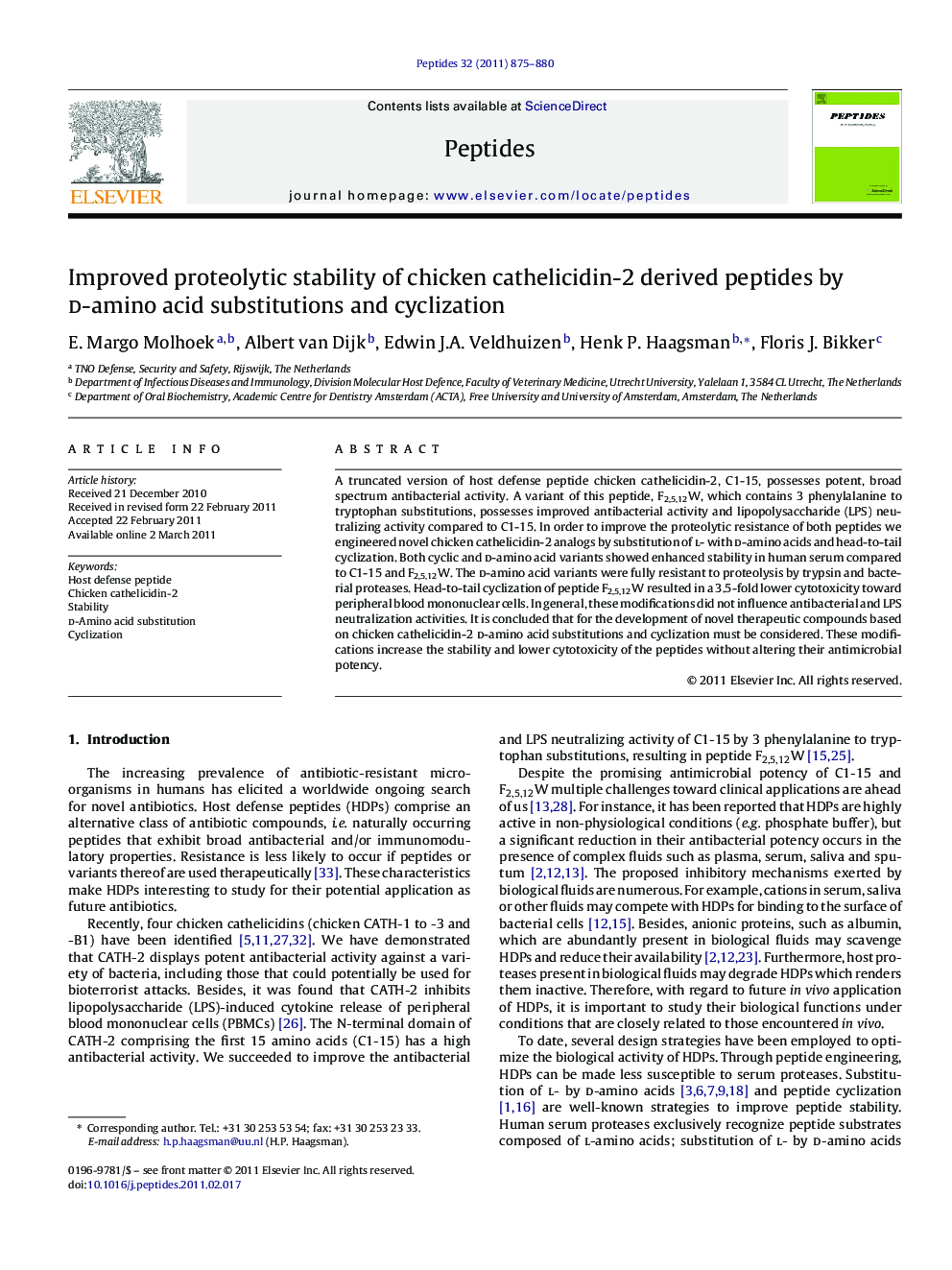| کد مقاله | کد نشریه | سال انتشار | مقاله انگلیسی | نسخه تمام متن |
|---|---|---|---|---|
| 2006536 | 1066345 | 2011 | 6 صفحه PDF | دانلود رایگان |

A truncated version of host defense peptide chicken cathelicidin-2, C1-15, possesses potent, broad spectrum antibacterial activity. A variant of this peptide, F2,5,12W, which contains 3 phenylalanine to tryptophan substitutions, possesses improved antibacterial activity and lipopolysaccharide (LPS) neutralizing activity compared to C1-15. In order to improve the proteolytic resistance of both peptides we engineered novel chicken cathelicidin-2 analogs by substitution of l- with d-amino acids and head-to-tail cyclization. Both cyclic and d-amino acid variants showed enhanced stability in human serum compared to C1-15 and F2,5,12W. The d-amino acid variants were fully resistant to proteolysis by trypsin and bacterial proteases. Head-to-tail cyclization of peptide F2,5,12W resulted in a 3.5-fold lower cytotoxicity toward peripheral blood mononuclear cells. In general, these modifications did not influence antibacterial and LPS neutralization activities. It is concluded that for the development of novel therapeutic compounds based on chicken cathelicidin-2 d-amino acid substitutions and cyclization must be considered. These modifications increase the stability and lower cytotoxicity of the peptides without altering their antimicrobial potency.
Research highlights
► CATH-2 derived peptides have antibacterial and/or LPS neutralizing activity.
► CATH-2 derived peptides are susceptible to proteolysis by proteases.
► All d-amino acids peptide variants show enhanced proteolytic resistance.
► Cyclic-F2,5,12W show enhanced stability in serum and improved selective toxicity.
Journal: Peptides - Volume 32, Issue 5, May 2011, Pages 875–880